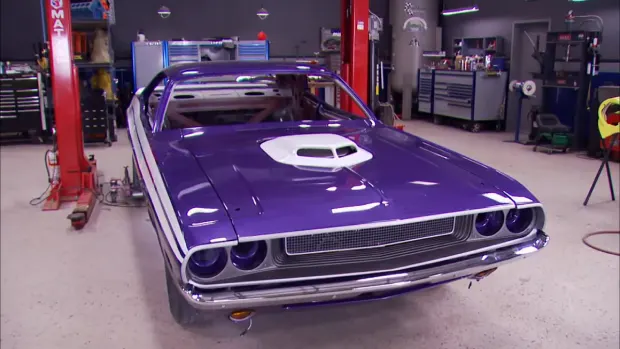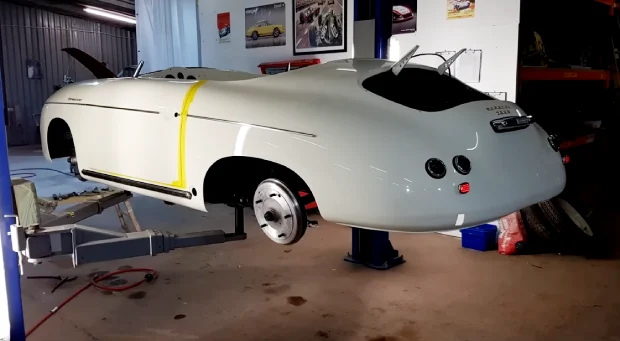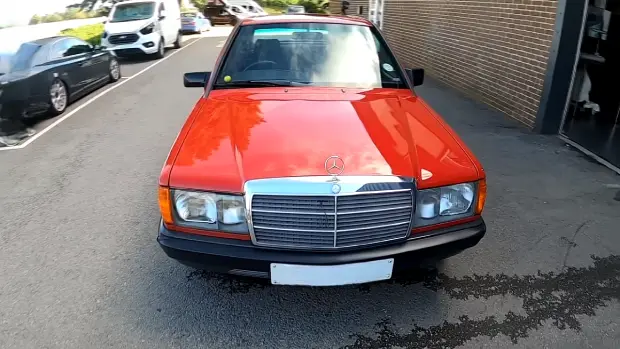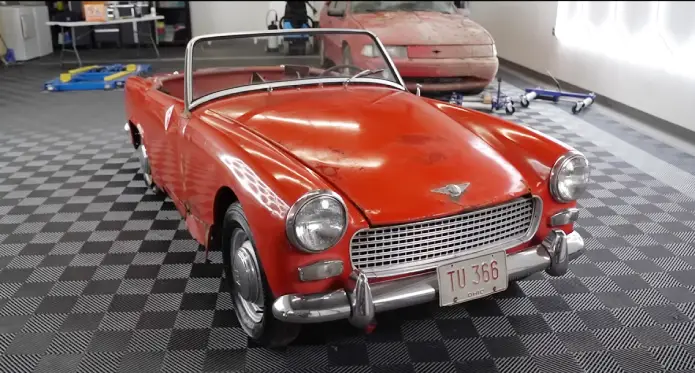Last Updated on May 3, 2023
Restoring a classic car to its former glory is an art that requires precision, patience, and dedication. From exterior auto body repairs to refinishing interior parts, every step in the restoration process is critical to achieving a seamless, breathtaking, and functional finish.
The challenge of restoring a classic car is not easy, but when it’s done right, the result is a stunning masterpiece showcasing the vehicle’s rich heritage. At the outset of the restoration process, assessing the car’s condition and establishing a plan of action is essential.
Today we will explore the art of repairing a classic car. We will discuss the challenges and rewards of restoring a vintage automobile. From the initial evaluation and diagnosis to the final refinishing and drivability correction, we will guide you through restoring your classic car.
So please sit back, grab a cup of coffee, and let’s explore the hidden treasure of classic car restoration.
What Restoration Processes are Involved in the Art of Restoring a Classic Car?

Restoring a classic car involves restoring it to its original, pristine state. It’s a painstaking process that involves high levels of technical expertise and attention to detail. A classic car restoration process typically includes:
Exterior Auto Body Repair
Exterior auto body repairing is the first step in restoring a classic car. It involves repairing all the bodywork and removing any dents, rust, or imperfections on the car’s exterior. This process requires a skilled technician who understands the intricacies of classic car bodywork.
The technician examines the bodywork, assesses the damage, and determines the techniques and equipment needed to return it to its original state. The technician repairs any dents or rust to ensure that the bodywork is smooth and visually appealing.
Structural/Frame Realignment
Before a classic car can be restored, the frame and structural components must be checked for damages. Structural/Frame Realignment involves restoring the frame and support structure of the car to the original manufacturer’s specifications.
A classic car’s unique design requires precision in restoring the vehicle frame and support structure. The technician removes any damages, misalignments, or deformations that have occurred over time, ensuring the car’s frame is stable and can withstand the rigors of daily use.
Interior Parts Refinishing/Replacement
The interior parts of a classic car play a significant role in its restoration. Interior Parts Refinishing replaces or refurbishes all worn-out parts of the car’s interior, including the seats, dashboard, headliner, door panels, and carpet.
Each part is carefully assessed to determine the extent of wear and tear, and technicians work to restore the parts to meet the manufacturer’s original specifications. Technicians use high-quality materials and precision techniques to ensure the car’s interior looks new and functions flawlessly.
Vehicle Refinishing
One of the most critical aspects of restoring a classic car is ensuring that the vehicle’s exterior has a perfect finish. Vehicle Refinishing involves painting the car and applying a protective coating to ensure the paint is durable and long-lasting.
The technician uses specialized tools and superior techniques to mimic the original paintwork, ensuring the car’s finish looks as good as the new one.
Vehicle Drivability Correction
Vehicle Drivability Correction involves restoring the car to its optimum operational conditions. The technician examines the engines, brakes, transmissions, and other mechanical components, ensuring that each component works harmoniously.
The aim is to make the car run smoothly and efficiently, providing a comfortable driving experience. Also, the restoration includes adding modern technology, such as better exhaust systems, power steering, and updated suspension to improve the car’s usability and efficiency.
If you want to restore your classic car to perfection, consider partnering with an expert. At St George auto body shop, we specialize in restoring classic cars to their original condition. We have the knowledge and experience to execute a smooth restoration process that will result in a stunning vehicle that will turn heads.
What to Consider Before Restoring a Classic Car?

It’s important to ask yourself several questions before embarking on such a project to ensure it’s worth your time and money. Here are some questions you should ask yourself before proceeding with a classic car restoration:
#1 What is the Current Condition of the Car?
When restoring a classic car, the first thing to consider is its current condition. Assessing the car’s condition upfront can help determine whether the restoration process will be manageable or beyond your capabilities.
Look closely at the car’s body, interior, engine, and mechanical components to determine the extent of damage or wear and tear.
#2 How Much Work Will Be Required to Restore It?
Once you’ve assessed the car’s condition, it’s time to determine how much work will be involved in restoring it. This will depend on several factors, including the car’s age, model, and condition. Make a detailed list of all the repairs and replacements that need to be made, from simple fixes.
#3 How Much Money Do You Need to Invest in the Project?
Before deciding to restore a car, it’s essential to determine how much money you’re willing to invest in the project. Restoring a classic vehicle can be expensive, ranging from a few thousand dollars to tens of thousands.
Consider the cost of the car itself, repairs, parts, labor, and any other expenses you might incur throughout the process.
#4 How Much Time Do You Need to Spend on the Project?
Restoring a classic car can take several weeks to months, depending on its condition and the required work. You’ll need to consider how much time you’re willing to dedicate to the project and how it will fit into your schedule.
#5 What is the Availability of Replacement Parts?
One of the biggest challenges in restoring a classic car is finding replacement parts. Depending on the make and model of the vehicle, finding original or aftermarket parts can be difficult or expensive.
Before restoring a classic car, research the availability of parts and consider the cost and time involved in sourcing them. This will give you a better idea of whether restoring the car is feasible and how long it will take to complete it.
#6 Will it Run Safely After Restoring?
When restoring a classic car, safety is paramount. After all, you don’t want to put yourself or anyone else at risk while driving the car. Before beginning the restoration process, consider whether the car will be roadworthy once completed.
This includes assessing the car’s brakes, steering, suspension, electrical systems, and other safety features.
#7 What is the Resale Value of the Car After Restoration?
Before restoring a classic car, it’s essential to consider its resale value. While some classic cars can fetch high prices, others may not be worth the investment. Research the car’s current market value in its restored condition to determine whether it’s worth your time and investment.
Revive a Piece of Automotive History: Restore Your Classic Car!

Restoring a classic car is no simple feat. It takes time, skill, and patience to bring a vintage automobile back to life. From the structural frame realignment to refinishing the interior and exterior, restoring a classic car is a work of art.
But the rewards of restoring a classic car are worth the effort. The satisfaction of bringing a piece of automotive history back to life is immeasurable. And the joy of driving your restored classic car down the road is an experience like no other.
So if you have a classic car that needs restoration, don’t give up. With determination, hard work, and professional help, you can restore your vintage automobile to its former glory.
